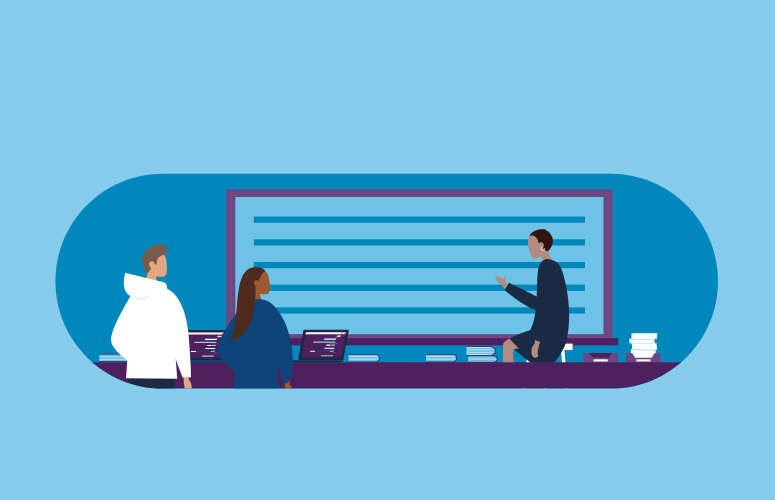One of the goals of PIPELINE has been to prototype tools and methods for incorporating I&E components into the physics curriculum. We chose to categorize our efforts according to the epistemology documented in the Phys21 report of the J-TUPP project.
The Scope of PIE Related to the Recommendations of Phys21
A representation of how learning areas included in PIE overlap with recommendations from the Phys21 report. PIE includes workplace-relevant skills, scientific and technical skills, physics-specific knowledge, and communication skills but also includes additional skills and knowledge relevant to innovation, entrepreneurship, and private sector employment.
There are numerous ways to categorize outcomes, but these, tied to extensive research by the J-TUPP panel and incorporating input from all of the affected constituencies, are an excellent baseline from which to begin. They address the educational outcomes that students need for career success. The first category, physics-specific knowledge, addresses the areas with which we are all most familiar, with adaptations to make that content more directly relevant to student needs in the working world. The second category, scientific and technical skills, in part, is responsible for the immense success of physics graduates in many careers, as they obtain broad capabilities in many technical areas, as well as the analytical, numerical, and experimental abilities that they apply to solving problems. The third area, workplace-relevant skills, is a direct outcome of the demands of the workplace on new hires and for the long-term success of students in their careers. The last category addresses a range of communication skills, including the typical areas addressed in physics education such as technical talks and research paper writing, but expanded to include communicating with nontechnical audiences and the communication needs demanded in industry. The activities developed in PIPELINE were conceived and implemented with these outcomes as their primary goals.
There Are Options
There is no one “right way” to bring PIE to students. There are many ways, and the variety of choices makes it possible for you to develop implementations that suit your particular institution, department, student needs and expectations, and campus and community resources. In the post-COVID-19 environment, online learning approaches and asynchronous teaching open up new modalities to interact with students. Some of the approaches discussed below are easily adapted to these kinds of teaching methods and are so noted; others don’t necessarily translate easily. None of the approaches in any way diminishes the core physics that we need students to experience and learn. Rather, they enhance that experience in ways that make physics more relevant to the jobs and careers students are likely to pursue, expand the student knowledge and skill base to address the expectations that employers tell us they have for incoming hires, and give them the skills to become even more powerful innovators, ready to tackle the world’s challenges.
Within the physics-specific skills category, the approach is to adapt the teaching methods, examples, and student experiences to more closely align the physics to real-world situations and applications. This adaptation can be accomplished by updating laboratory exercises and experiences to utilize modern tools; for example, having students use free 3D CAD software to draw their experimental setups gives them the modeling experience industry wants them to have without changing their exposure to physics content. Teaching physics in the context of a commercial application—such as the Hyperloop discussed below—allows students to understand fundamental physics while also absorbing the concepts of uncertainty, technical feasibility, and human desirability. Having students do projects that connect their physics learning to applications can enhance their experience without taking up class time. For example, advanced physics students could study and report on the operation of ring laser gyros as general relativity-based technologies for inertial guidance systems. Nearly every element in physics education can be easily adapted to connect learning to I&E student outcomes. All of these can be accomplished in class or using online or asynchronous teaching methods.
When it comes to some of the nontraditional topics that I&E education incorporates, remember that you don’t have to deliver it all yourself. As you consider some of the content areas that may be removed from your personal realm of expertise, you may not feel prepared to deliver these educational components to students. Across your campus and in your community is a plethora of assets on which you can draw to bring students the kinds of experiences that will prepare them for their futures. For example, one of the expected skill sets is experience with a variety of laboratory and manufacturing equipment and software. Since physics labs are equipped with fundamental measuring instruments (scopes, meters, etc.), one could work with a chemistry department so students can see NMR/MRI, UV and IR spectrometers, mass spectrometers, and other types of equipment that are likely to be found in industry environments. Similarly, CNC and CAD systems are likely available in either an engineering department or a local/regional business. In the post-COVID-19 environment, some of these goals could be accomplished by having students visit regional businesses or by having industry experts engage students online with demonstrations of equipment and industry methods. Even YouTube videos can be used to instruct students in the use of industry standard equipment.
Workshops on project management skills, for example, are sometimes offered for free (or at low cost) by regional economic groups, such as small business development centers (SBDCs) or economic development corporations (EDCs)—some of which could very well be offered online. These types of organizations also host seminars or speaker series that can be attended by students and faculty. You can also invite them to speak with your students directly—either in person or virtually. Attorneys will often give free talks to faculty and students on intellectual property. Taking part in activities like these also provides an opportunity for you to osmotically learn skills that will enhance your knowledge and experience and provide benefit to you and your students in the future.

